
Papal Coinage
.pdfStephen V - 885 to 14 September 891
Pope Stephen V, (885-891), succeeded Pope Adrian III, and was in turn succeeded by Pope Formosus. In his dealings with Constantinople in the matter of Photius, as also in his relations with the young Slavonic church, he pursued the policy of Pope Nicholas I.
His father, Hadrian, who belonged to the Roman aristocracy, entrusted his education to his relative, Bishop Zachary, librarian of the Holy See. Stephen was created cardinal-priest of SS. Quattro Coronati by Marinus I, and his obvious holiness was the cause of his being chosen pope.
He was consecrated in September, 885, without waiting for the imperial confirmation; but when Charles the Fat found with what unanimity he had been elected he let the matter rest.
Stephen was called upon to face a famine caused by a drought and by locusts, and as the papal treasury was empty he had to fall back on his father's wealth to relieve the poor, to redeem captives, and to repair churches.
To promote order he adopted Guy III of Spoleto "as his son" and crowned him Emperor (891). He also recognized Louis the Blind as King of Provence. As Aurelian, Archbishop of Lyon, would not consecrate Teutbold who had been canonically elected Bishop of Langres, Stephen himself consecrated him. He had also to oppose the arbitrary proceedings of the Archbishops of Bordeaux and Ravenna, and to resist the attacks which the Patriarch Photius made on the Holy See. His resistance was successful, and the Emperor Leo Sent the disturber into exile. When writing against Photius, he begged the emperor to send warships and soldiers to enable him to ward off the assaults of the Saracens.
Stephen, who received many English pilgrims and envoys bringing Peterspence, was buried in the portico of the basilica of that Apostle.
In some sources, this pope is called Stephen VI and Pope Stephen IV is called Stephen V.
Stephen, a priest of Rome elected pope in March of 752 to succeed Pope Zachary, died of apoplexy three days later, before being ordained a bishop. In those times, the pope was chosen from among the priests and deacons of Rome and never from among bishops from other dioceses [1]. By definition, the pope was the bishop of Rome and was considered legitimate only from the day of his ordination. As a result, Stephen was not considered a legitimate pope and as such, omitted from all lists of popes. His immediate successor, also called Stephen, is as a rule numbered Stephen II, since the name Stephen had been already borne by Pope Stephen I (254-257).
From 752 to 942, seven popes reigned bearing the name of Stephen. Originally, they were not otherwise distinguished, as regnal numbering was not applied to popes until the 10th century. They were named Stephen II to VIII respectively after their death. But the next pope to take the name Stephen in 1057, after numbering had become a custom, was called Stephen IX during his life and signed all his documents "Stephanus Nonus Papa".
Approximately from the beginning of the 13th century, the election to Papacy (in contrast to episcopal consecration) was considered the beginning of the pontificate, not only because nearly all popes were now already bishops when elected [2], but especially to ensure a clear transition of the very great papal powers, not subject to other forces. Episcopal consecration thus became a formality as far as the papal title, which was not a sacramental order, was concerned. A pope was thus legitimate pope from his election, even before his consecration. According to this new point of view, when Pope Celestine IV (1241) or Pope Urban VII (1590) died just after their election, before their papal consecration, they were still considered legitimate. The most extreme case is Pope Adrian V, who was elected pope in 1276 without ever having been ordained to the priesthood, and died one month later, still not ordained: he has always been considered a legitimate pope. In the 16th century, at the time of the Council of Trent and the Catholic Counter-Reformation, the supremacy of the Church and its leader was reinforced. It was emphasized that the pope owed his election only to the Holy Spirit and thus became pope from the moment of election.
Therefore Pope-elect Stephen was now counted as a legitimate pope. He had then to be called Stephen II and the following Stephens had to be requalified from Stephen III to Stephen X — even if the last one was called of ficially Stephen IX during his life.
During the reign of Pope John XXIII, Stephen was again erased from the lists. The Annuario pontificio, which gives the authorized list of popes, was modified in its 1961 edition, and the regnal numbers of the subsequent Stephens reverted to II to IX.
Although pope-elect Stephen has not been listed among the popes in the Annuario pontificio since 1961, many recent articles and internet sites continue to list him as pope, often relying on the 1913 edition of the Catholic Encyclopedia, because it is in the public domain. Even reputable sources such as the Encyclopedia Britannica continue to refer to him as "unconsecrated pope" Stephen (II), with his successor identified either as Stephen (II) III or as Stephen II (III).
The matter of Stephen's legitimacy is of no theological or historical consequence, as he died without having made any decisions. Thus, the only aspect affected by his recognition, or lack thereof, is the list of popes.

PAPAL COINS
STEPHEN V with CHARLES THE FAT (885-891)
Denaro 1,02 g.
Obv.: +SCS PETRVS around cruciform monogram of SEPHAN
Rev.: CAROLVS MP around ROMA monogram
Reference: Muntoni 3; CNI 3; MEC 1054. Rare. Extremely fine.
Estimate: 3000 CHF. Price realized: 4,100 CHF (approx. 3,928 U.S. Dollars as of the auction date)
PAPAL COINS
STEPHEN V with CHARLES THE FAT (885-891)
Denaro 22 mm 1,03 g.
Obv.: +SCS PETRVS around cruciform monogram of SEPHAN
Rev.: CAROLVS MP around ROMA monogram
Reference: M 3. B 42. MEC 1054. Beautiful example!
Estimate CHF 1400. Price realized: 2,000 CHF (approx. 1,478 U.S. Dollars as of the auction date)
Formosus - 19 Sept. 891 to 4 April 896
Formosus (c. 816 in Ostia–896) was Pope of the Roman Catholic Church from 891 to 896. His brief reign as Pope was troubled, and his remains were exhumed and put on trial in the notorious Cadaver Synod.
He became Cardinal Bishop of Portus in 864. He undertook diplomatic missions to Bulgaria (866) and France (869 and 872), and he persuaded Charles the Bald, King of France, to be crowned by the Pope.
As early as 872 he was a candidate for the papacy, but due to political complications he left Rome and the court of Pope John VIII that year. John convened a synod, and Formosus was ordered to return, or be excommunicated on charges that he had aspired to the Bulgarian Archbishopric and the Holy See, had opposed the emperor and had deserted his diocese without papal permission, had despoiled the cloisters in Rome, had performed the divine service in spite of the interdict, and had "con-
spired with certain iniquitous men and women for the destruction of the papal see". The condemnation of Formosus and others was announced in July 872. In 878 the sentence of excommunication was withdrawn after he promised never to return to Rome or exercise his priestly functions.
In 883 John's successor, Pope Marinus I, restored Formosus to his suburbicarian diocese of Portus. Following the reigns of Marinus, Pope Hadrian III (884–885) and Pope Stephen V (885–891), Formosus was elected Pope on October 6, 891.
Supporters of Guy II of Spoleto forced Formosus to crown him as a Roman Emperor in April 892. Other immediate issues were that in Constantinople, the Patriarch Photius had been ejected and Stephen, the son of Emperor Basil I, had taken the office. There was a quarrel between the Archbishops of Cologne and Hamburg concerning the Bishopric of Bremen. In the contest between Odo, Count of Paris and Charles the Simple for the French crown, the Pope sided with Charles.
Formosus persuaded Arnulf of Carinthia to advance to Rome, invade the Italian peninsula, and take control of Italy. In 894, Arnulf's army occupied all the country north of the Po River. Guido died in December, leaving his son Lambert in the care of his mother Agiltrude, an opponent of the Carolingians. In autumn 895 Arnulf undertook his second Italian campaign, and in 896 he was crowned by the Pope in Rome. The new emperor moved against Spoleto but was struck with paralysis on the way and was unable to continue the campaign.
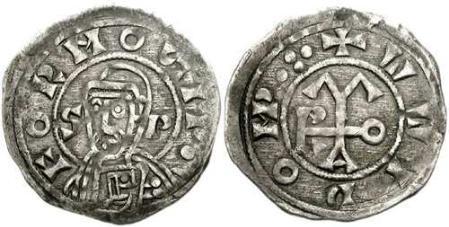
On April 4, 896, Formosus died. He was succeeded by Pope Boniface VI.
Pope Stephen VI, the successor of Boniface, influenced by Lambert and Agiltrude, sat in judgment of Formosus in 897, in what was called the Cadaver Synod. The corpse was disinterred, clad in papal vestments, and seated on a throne to face all the charges from John VIII. The verdict was that the deceased had been unworthy of the pontificate. All his measures and acts were annulled, and the orders conferred by him were declared invalid. The papal vestments were torn from his body, the three fingers from his right hand that he had used in consecrations were cut off and the corpse was thrown into the Tiber (and later retrieved by a monk).
Following the death of Stephen VI, Formosus' body was reinterred in St Peter's. Further trials of this nature against deceased persons were banned, but Pope Sergius III (904–911) reapproved the decisions against Formosus. Sergius demanded the re-ordina- tion of the bishops consecrated by Formosus, who in turn had meanwhile conferred orders on many other clerics, causing great confusion. Later the validity of Formosus's work was re-reinstated. The decision of Sergius with respect to Formosus has been subsequently disregarded by the Church.
PAPAL COINS
Formosus. 891-896.
Denaro Struck 891-894. 21 mm 1,24 g.
Obv.: FORMOSI P•, half-length bust of St. Peter facing slightly left, holding keys; S P across field .
Rev.: +WWIDO IMP (IMP ligate) (diamond of four pellets), ROMA monogram.
Reference: CNI XV 2; Muntoni 1; Berman 45. VF, toned. Very rare.
Shortly after assuming office, Formosus, in order to secure his position as Pope, was forced to crown Guy II of Spoleto and his young son Lambert as co-emperors. Fearing their power, he offered to crown Arnulf of Carinthia in their place if he “liberated” Italy . Early in 894, Arnulf entered the Italy and conquered all of the territory north of the Po. Later that year, Guy died and Lambert was removed, though it was not until 896 when Formosus finally crowned him emperor. Shortly thereafter, both he and Formosus died.
Following the death of both Formosus and Arnulf, Lambert, under the influence of his mother Agiltrude, sought his reinstatement as emperor and in 897, the new pope Stephen VI, convened what has subsequently known as the Cadaver Synod , by putting the disinterred corpse of Formosus on trial. Found guilty and unworthy of his pontificate, all his measures and acts, including his removal of Lambert as emperor, were annulled, and the orders conferred by him were declared invalid. The papal vestments were torn from his body, the three fingers from his right hand that he had used in consecrations were cut off and the corpse was thrown into the Tiber.
Sold For $3250
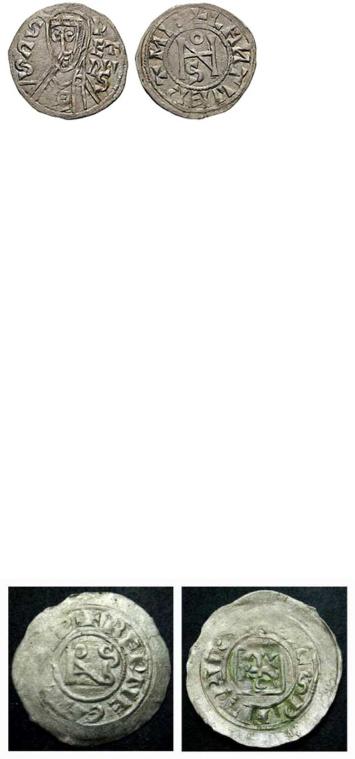
John IX - Jan. 898 to Jan. 900
John IX, Pope from 898 to 900, not only confirmed the judgment of his predecessor Pope Theodore II (897) in granting Christian burial to Pope Formosus (891–896), but at a council held at Ravenna decreed that the records of the synod which had condemned him should be burned.
Finding, however, that it was advisable to cement the ties between the empire and the papacy, John IX gave unhesitating support to Lambert in preference to Arnulf, and also induced the council to determine that henceforth the consecration of the Popes should take place only in the presence of the imperial legates. The sudden death of Lambert shattered the hopes which this alliance seemed to promise. John IX was succeeded by Pope Benedict IV (900–903).
PAPAL COINS
POPE JOHN IX (898-900) and LAMBERT OF SPOLETO (894-898).
Denaro. Struck circa 898-900. 1,21 g.
Obv.: SCS PETRVS, bust of St. Peter three-quarter facing
Rev.: +LANTVERT MP around IOHANIS monogram.
Reference: MEC 1063; Berman 13; Muntoni I pg. 13, 1, Serafini IV pg. 16, 1; CNI XV pg. 82, 1. Toned, good VF. In order to establish peace following the chaos caused by the posthumous trial of Formosus in 897, John IX rehabilitated the former pope’s memory and confirmed the imperial consecration on Lambert of Spoleto.
Estimate $1500 Sold For $1850
John X - March 914 to May 928
John X, Pope from March, 914 to May, 928, was deacon at Bologna when he attracted the attention of Theodora, the wife of Theophylact, Count of Tusculum, the most powerful noble in Rome, through whose influence he was elevated first to the see of Bologna and then to the archbishopric of Ravenna.
In direct opposition to a decree of council, John X was, at the instigation of Theodora, promoted to the papal chair as the successor of Pope Lando (913–914). Like Pope John IX (898–900) he endeavoured to secure himself against his temporal enemies through a close alliance with Theophylact and Alberic, marquis of Camerino, then governor of the duchy of Spoleto.
In December 915 John X granted the imperial crown to Berengar of Friuli (915–924), and with the assistance of the forces of all the princes of the Italian peninsula, he took the field in person against the Saracens, over whom he gained a great victory on the banks of the Garigliano. The defeat and death of Berengar in 924, through the combination of the Italian princes, again frustrated the hopes of a united Italy, and after witnessing several years of anarchy and confusion, John X perished as a result of the intrigues of Marozia, daughter of Theodora. His was succeeded by Pope Leo VI in 928.
PAPAL COINS
JOHN X with BERENGAR I (914-928)
Denaro. Ag 1,05 g.
Obv.: +BERENGARIV IMP around monogram of IOHANS PA
Rev.: +SCS PETRVS around ROMA monogram in square border
Reference: Muntoni 3; CNI 4; MEC 1073; Berman 64. Very fine.
Estimate: 2500 CHF. Price realized: 11,000 CHF (approx. 10,537 U.S.
Dollars as of the auction date)

ANONYMOUS ISSUE - 13th CENTURY
PAPAL COINS
Anonymous issues. 13th century.
Grosso. Ag 3,38 g.
Obv.: Lion passant left.
Rev.: Roma enthroned facing, holding globus and palm.
Reference: CNI XV 25; Muntoni 59; Berman 110. Good VF, toned.
Estimate: $300. Price realized: 380 USD.
Issue of the Roman Senate.
SEDE VACANTE - 1268-1271
PAPAL COINS
SEDE VACANTE, 1268-1271.
Denaro. Viterbo mint. 0,60 g.
Obv.: Cross, +PATRIMONIV’
Rev.: 2 parallel standing keys, +BEATI PETRI
Reference: Munt. 2. Berman 64. Biaggi 3005. Irregular rim. VF. Sehr schön
Estimate: EUR 50. Price realized: 210 EUR (approx. 265 U.S. Dollars as of the auction date)
PAPAL COINS
SEDE VACANTE, 1268-1271.
Grosso. Viterbo mint. 1,34 g.
Obv.: Bearded head facing. SANCTVS PETRVS
Rev.: 2 parallel standing keys SANCTVS PETRVS
Very rare. Green deposit, rim break, still VF.
Estimate: 100 EUR. Price realized: 400 EUR (approx. 613 U.S. Dollars as of the auction date)
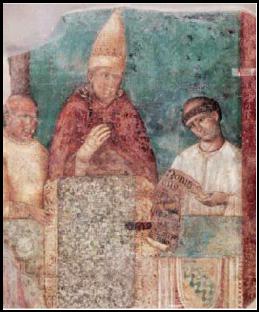
Boniface VIII - 24 Dec. 1294 to 11 Oct. 1303
Pope Boniface VIII (c. 1235 – October 11, 1303), born Benedetto Caetani, was
Pope of the Catholic Church from 1294 to 1303.
Caetani was born in 1235 in Anagni, c. 50 kilometers southeast of Rome. He was the younger son of a minor noble family, the Caetani Family, and became a canon of the cathedral in Anagni in his teens. In 1252, when his uncle Peter Caetani became bishop of Todi, in Umbria, Benedict went with him and began his legal studies there. Benedict never forgot his roots in Todi, later describing the city as "the dwelling place of his early youth," the city which "nourished him while still of tender years," and as a place where he "held lasting memories". In 1260, Benedict acquired a canonry in Todi, as well as the small nearby castle of Sismano. Later in life he repeatedly expressed his gratitude to Anagni, Todi, and his family.
In 1264, Benedict became part of the Roman Curia where he served as secretary to Cardinal Simon of Brie on a mission to France. Similarly, he accompanied Cardinal Ottobono Fieschi to England (1265-1268) in order to suppress a rebellion by a group of barons against Henry III, a churchman in England. Upon Benedict's return from England, there is an eight year period in which nothing is known about what occurred in his life. After this eight year period of uncertainty, Benedict was sent to France to supervise the collection of a tithe in 1276 and then became a papal notary in the late 1270s. During this time, Benedict accu-
mulated seventeen benefices which he was permitted to keep when he was promoted, first to cardinal deacon in 1281 and then 10 years later as cardinal priest. As cardinal, he often served as papal legate in diplomatic negotiations with France, Naples, Sicily, and Aragon.
He was elected in December 24, 1294 after Pope Celestine V abdicated in December 13. There is a legend that it was Boniface VIII's doing that Celestine V renounced the papacy - for Boniface, previously Benedetto, convinced Celestine V that no person on the earth could go through life without sin. However, in later times, it is a more common understanding that Celestine V resigned by his own designs and Benedetto merely showed that it was allowed by Church law. Either way, Celestine V left and Boniface VIII took his place as pope. One of his first acts as pontiff was to imprison his predecessor in the Castle of Fumone in Ferentino, where he died at the age of 81, attended by two monks of his order. In 1300, Boniface VIII formalized the jubilees, which afterwards became a source of both profit and scandal to the church. Boniface VIII founded the University of Rome La Sapienza in 1303.
Boniface VIII put forward some of the strongest claims to temporal, as well as spiritual, supremacy of any Pope and constantly involved himself with foreign affairs. In his Bull of 1302, Unam Sanctam, Boniface VIII proclaimed that it "is absolutely necessary for salvation that every human creature be subject to the Roman pontiff", pushing papal supremacy to its historical extreme. These views and his intervention in 'temporal' affairs led to many bitter quarrels with the Emperor Albert I of Hapsburg (1291-1298), the powerful family of the Colonnas, and with Philip IV of France (1285–1314).
The conflict between Boniface VIII and Philip IV of France came at a time of expanding nation states and the desire for the consolidation of power by the increasingly powerful monarchs. The increase in monarchical power in the rising nation states and its conflicts with the Church of Rome were only exacerbated by the rise to power of Phillip IV. In France, the process of centralizing royal power and developing a genuine national state began with the Capetian kings. During his reign, Phillip surrounded himself with the best civil lawyers, and decidedly expelled the clergy from all participation in the administration of the law. With the clergy beginning to be taxed in France and England in order to finance their ongoing wars against each other, Boniface took a hard stand against it. He saw the taxation as an assault on traditional clerical rights, and ordered the Bull Clericis laicos in February 1296, forbidding lay taxation of the clergy without prior papal approval. In the bull, Benedict states "they exact and demand from the same the half, tithe, or twentieth, or any other portion or proportion of their revenues or goods; and in many ways they try to bring them into slavery, and subject them to their authority. And also whatsoever emperors, kings, or princes, dukes, earls or barons...presume to take possession of things anywhere deposited in holy buildings...should incur sentence of excommunication." It was during the issuing of Clericis Laicos that hostilities between Boniface and Philip began. Philip retaliated against the bull by denying the exportation of money from France to Rome, funds that the Church required to operate. Boniface had no choice but to quickly meet the demands of Philip by allowing taxation only "during an emergency."
After complications involving the capture of Jean Lemoine by Philip, the conflict was re-ignited. In December of 1301, Philip was sent the Papal Bull Ausculta fili ("Listen, My Son"), informing Philip that "God has set popes over kings and kingdoms."
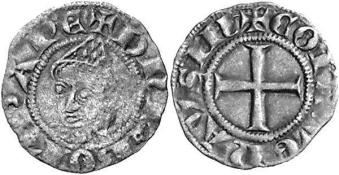
The feud between the two reached its peak in the early 14th century when Philip began to launch a strong anti-papal campaign against Boniface. On November 18, 1302, Boniface issued one of the most important papal bulls of Catholic History: Unam Sanctum. It declared that both spiritual and temporal power were under the pope's jurisdiction, and that kings were subordinate to the power of the Church.
In response, Guillaume de Nogaret, Philip's chief minister, denounced Boniface as a heretical criminal to the French clergy. In 1303, Philip and Nogaret were excommunicated. However, on September 7, 1303 an army led by Nogaret and Sciarra Colonna of the Colonna family surprised Boniface at his retreat in Anagni. The King and the Colonnas demanded that he resign, to which Boniface VIII responded that he would 'sooner die'. Boniface was beaten badly and nearly executed but was released from captivity after three days. He died a month later, on October 11, 1303.
After the humiliating ordeal of Boniface and Philip, no popes would ever again challenge or seriously threaten kings and emperors despite further excommunications and interdictions. In the future, the Church would see itself becoming subordinate to the growing power of the European nation-states and their secular leaders, and the church's secular power would forever be lost. It is also interesting to note that this was the first event that marked the downfall of the Church's prestige, and the decline of its prestige and advertisement of its corruptions led to the Reformation.
Boniface VIII was buried in St. Peter's Basilica in a grandiose tomb that he had designed himself. (Allegedly, when the tomb cracked open three centuries after his death (on October 9, 1605), his body was revealed to be perfectly incorrupt.)
Pope Boniface VII is now considered an anti-pope. At the time, however, this fact was not recognized and so the seventh true Pope Boniface took the official number VIII. This has advanced the numbering of all subsequent Popes Boniface by one. Therefore, Popes Boniface VIII and IX are really the seventh and eighth popes respectively.
A process (judicial investigation) against the memory of Pope Boniface VIII was held from 1303 to 1311. Its records were republished in a critical edition by J. Coste (1995). The collected testimonies (especially those of the examination held at Groseau in August and September of 1310) alleged many heretical opinions of Boniface VIII.
The historicity of these testimonies is disputed among scholars. T. Boase, whose 1933 biography of Pope Boniface VIII is often regarded as still the best, comes to the conclusion, "The evidence is not unconvincing ... but it was too late, long years after the event, to construct an openly held heresy out of a few chance remarks with some newly-added venom in construing them" (p.
361).
The posthumous trial against the memory of Boniface VIII was in any case settled without a result in 1311.
PAPAL COINS
Boniface VIII. 1294-1303.
Denaro paparino Pont de Sorgues mint.
Obv.: DnI*BON*PAPE MItred bust facing, looking slightly to left.
Rev.: COIT*VENAVSIN Cross.
Reference: Muntoni 2, CNI -, Biaggi -. Very rare. Good VF.
Estimate: 250 EUR. Price realized: 850 EUR (approx. 1,041 U.S. Dollars as of the auction date)
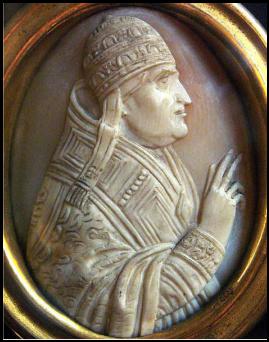
John XXII - 7 Aug. 1316 to 4 Dec. 1334
Pope John XXII (1249 – December 4, 1334), born Jacques Duèze (or d'Euse), was pope from 1316 to 1334. He was the second Pope of the Avignon Papacy (1309-1377), elected by a conclave in Lyon assembled by Philip V of France.
Like his predecessor, Clement V, he centralized power and income in the Papacy, living a princely life in Avignon. He opposed Louis IV of Bavaria as emperor, and Louis in turn invaded Italy and set up an antipope, Nicholas V. Pope John XXII also faced controversy in theology involving his views on the Beatific Vision.
The son of a shoemaker in Cahors, Jacques Duèze studied medicine in
Montpellier and law in Paris.
The death of Pope Clement V in 1314 was followed by a sedisvacancy of two years, due to disagreements between the cardinals, who were split into two factions. After two years, Philip V of France (1316–22) finally in 1316 managed to arrange a conclave of twenty-three cardinals in Lyon. This conclave elected Jacques Duèze, who took the name John XXII and was crowned in Lyon. He set up his residence in Avignon rather than Rome, continuing the Avignon Papacy of his predecessor.
John XXII involved himself in the politics and religious movements of many European countries in order to advance the interests of the Church. This made him a very controversial pope at the time.
Before John XXII's election a contest had begun for the imperial crown between Louis IV of Bavaria (1314–47) and his opponent, Frederick I of Austria (1308–30). John XXII was neutral at first; but in 1323, when Louis IV had won and became Holy Roman Emperor, the Guelph (papal) party and the Ghibelline (imperial) party began a serious quarrel. This was partly provoked by John XXII's extreme claims of authority over the empire and also partly by Louis IV's support of the spiritual Franciscans, whom John XXII condemned for their insistence on evangelical poverty and their belief that mendicant friars would replace the priesthood and sacraments of the Church. Louis IV was assisted in his doctrinal dispute with the papacy by Marsilius of Padua, and later by the British Franciscan friar and scholar William of Ockham. Louis IV invaded Italy, entered Rome and set up Pietro Rainalducci as antipope Nicholas V (1328–30). The project was a fiasco. Guelphic predominance at Rome was later restored, and Pope John excommunicated William of Ockham. However, Louis IV had silenced the papal claims, and John XXII stayed the rest of his life in Avignon.
Pope John XXII was involved in a theological controversy involving the Beatific Vision. Beginning before he was pope, he argued that those who died in the faith did not see the presence of God until the Last Judgment. The point is important to Catholics, since if the dead are not in the presence of God, then the whole idea of prayers to the saints would seem to be undermined. John XXII continued this argument for a time in sermons while he was pope, although he never taught this in official documents. He eventually backed down from his position, and agreed that those who died in grace do indeed immediately enjoy the Beatific Vision.
Despite holding for many years a view widely held to be heretical, John XXII is not considered a heretic because in his day the doctrine he had contradicted had not been formally defined by the Church, a lacuna that his successor, Pope Benedict XII (1334–42), immediately filled by the encyclical Benedictus Deus, which formally defined this doctrine as part of Church teaching.
Pope John XXII was also an excellent administrator and did much efficient reorganizing.
John XXII has traditionally been credited with having composed the prayer 'Anima Christi, sanctifica me...', which has come down to us in English as 'Soul of Christ, sanctify me...' and as the hymn, 'Soul of my Saviour, sanctify my breast'.
On Sunday 27th March 1329 John XXII condemned many writings of Meister Eckhart as heretical in his papal bull 'in agro dominico'.
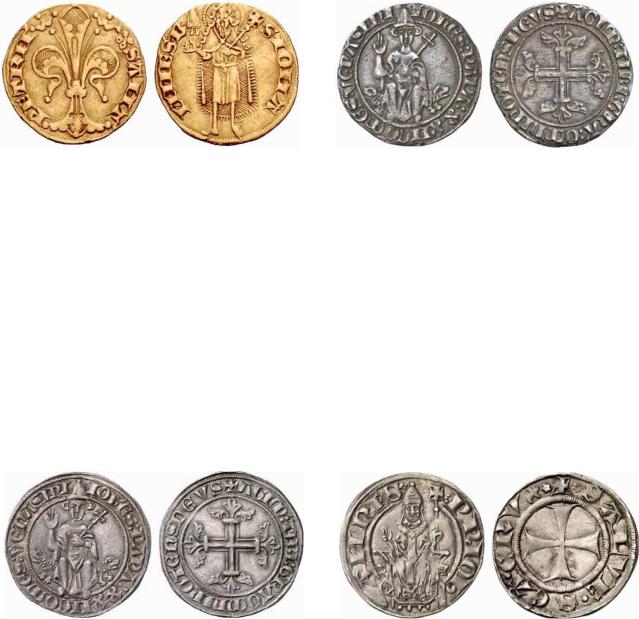
PAPAL COINS
Johannes XXII., 1316-1334.
Gold Gulden. 3,46 g.
Obv.: Large stylized fleur-de-lis. SANT PETRII’
Rev.: John the Baptist stands facing, tiara to left of head. S. IOHANNES .B.
Reference: Poey d’’Avant 4140. Fr. 27. VF.
Estimate: CHF 650. Price realized: 700 CHF (approx. 565 U.S. Dollars as of the auction date)
PAPAL COINS
Johannes XXII., 1316-1334.
Grosso tornese. Pont de Sorgues mint. 3,93 g.
Obv.: Mitred pope enthroned, with right hadn raised in blessing, and cross staff.
Rev.: Floreate cross.
Very rare, nice patina. XF.
Estimate: 750 EUR. Price realized: 2,600 EUR (approx. 3,985 U.S. Dollars as of the auction date)
PAPAL COINS
Johannes XXII., 1316-1334.
Grosso tornese. Pont de Sorgues mint. 3,77 g.
Obv.: Mitred pope enthroned, with right hadn raised in blessing, and cross staff.
Rev.: Floreate cross.
Reference: Muntoni 7. Rare, beautiful Patina, VF +
Estimate: 250 EUR. Price realized: 700 EUR (approx. 992 U.S. Dollars as of the auction date)
PAPAL COINS
Johannes XXII., 1316-1334.
Grosso. Macerata mint. 2,24 g.
Obv.: Mitred pope enthroned, with right hadn raised in blessing, and cross staff.
Rev.: Cross.
Reference: Muntoni 1. Rare, VF.
Estimate: 200 EUR. Price realized: 1,200 EUR (approx. 1,839 U.S. Dollars as of the auction date)
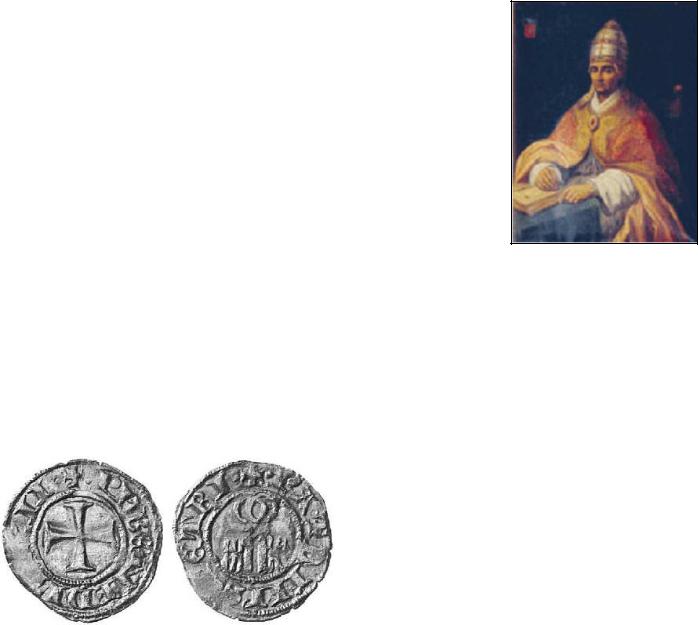
Benedict XII - 20 Dec. 1334 to 25 April 1342
Pope Benedict XII (died April 25, 1342), born Jacques Fournier, was Pope from 1334 to 1342.
Little is known of the origins of Jacques Fournier. He is believed to have been born in Saverdun in the Comté de Foix around the 1280s to a family of modest means. He became a Cistercian monk and left to study at the University of Paris. In 1311 he was made Abbot of Fontfroide Abbey and quickly became known for his intelligence and organizational ability. In 1317 he was made bishop of Pamiers. There he undertook a rigorous hunt for Cathar heretics, which won him praise from religious authorities, but alienated the local people.
His efforts against the Cathars of Montaillou in the Ariège, were carefully recorded in the Fournier Register which he took to Rome and deposited in the Vatican Library. This has been documented by Emmanuel Le Roy Ladurie's pioneering microhistory, Montaillou, village occitan. In 1326, upon the successful rooting out of the last - it was believed - heretics of the south, he was made Bishop of Mirepoix in the Ariège. A year later, in 1327, he was made a cardinal.
Fournier succeeded Pope John XXII (1316–34) as Pope in 1334, being elected on the first conclave ballot. But he did not carry out the policy of his predecessor. He practically made
peace with the Emperor Louis IV, and as far as possible came to terms with the Franciscans, who were then at odds with the Roman See.
Benedict XII was a reforming pope who tried to curb the luxuries of the monastic orders, though without much success. He also ordered the construction of the Palais des Papes in Avignon. He spent most of his time working on questions of theology. He rejected many of the ideas developed by John XXII and campaigned against the Immaculate Conception. He engaged in long theological debates with other noted figures of the age such as William of Ockham and Meister Eckhart
A note on the numbering: Pope Benedict X is now considered an antipope. At the time, however, this status was not recognized and so the man the Roman Catholic church officially considers the tenth true Pope Benedict took the official number XI, rather than X. This has advanced the numbering of all subsequent Popes Benedict by one. Popes Benedict XI-XVI are, from an official point of view, the tenth through fifteenth popes by that name.
PAPAL COINS
Benedict XII, 1334-1342.
Denaro paparino. Macerata mint. 17 mm 0,65 g.
Obv.: Cross.
Rev.: Key on pole.
Reference: M 4. B 181. Very rare. Beautiful condition!
Estimate CHF 300. Price realized: 390 CHF (approx. 288 U.S. Dollars as of the auction date)
